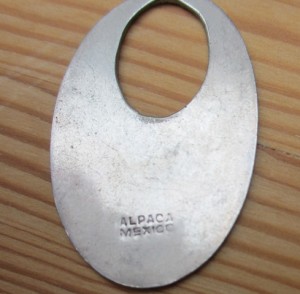Silver purity standards differ from country to country
Pure or fine silver is silver of highest content: 999%. Objects made of precious metal clay result in 999-silver jewellery pieces. The purest does not mean the best for jewellery making. Fine silver is not only costly but also very soft. Therefore the most popular silver form used for jewellery making is an alloy of 92.5 % (.925) silver and 7.5% (.075) copper. This alloy is called sterling silver. In the USA this proportion is fixed by law and no other silver form can be called “sterling”.
Silver purity standards and proportions differ in different countries. In the 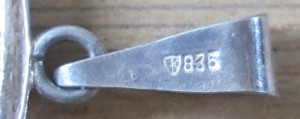 Netherlands there are currently three grades of silver purity depending on the content: first (925/1000), second (835/1000), and third (800/1000) grade.
Netherlands there are currently three grades of silver purity depending on the content: first (925/1000), second (835/1000), and third (800/1000) grade. 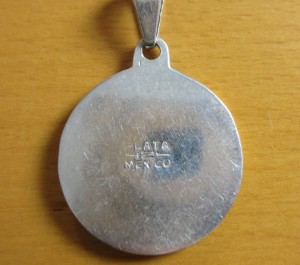 The third grade of 80% is mainly used in such countries as Germany, Italy and Switzerland. In France and UK the 91,5% or 915/000 silver standard is also widely used.
The third grade of 80% is mainly used in such countries as Germany, Italy and Switzerland. In France and UK the 91,5% or 915/000 silver standard is also widely used.
Not only standards can differ from country to country. In some countries it is not obligatory to state silver content on the pieces sold in the category “silver”. For instance, Mexican silver used by many Mexican and American Indians craftsmen has a silver content of above 90%. But the hallmark on the Mexican piece says just “PLATA” = silver.
Russia (former USSR – and Russia again after 1991) had/has the following silver purity standards
Before the revolution of 1917 and until 1927: 72, 82, 84, 88, 91.
From 1927 until June 1999: 750, 800, 830, 875, 916, 925, 960.
From June 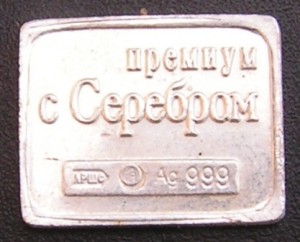 1999: 800, 830, 875, 92
1999: 800, 830, 875, 92 5, 960, 999.
5, 960, 999.
In modern Russia the 999 content has been introduced. The 999-silver has found an interesting application, quite in line with the country’s image. There is a vodka brand on the market with small silver tokens in every bottle. These coins with different themes and images are collectible items like Cola bottle caps. You will have to drink up a lot of vodka to collect them all!
More detailed information on silver purity standards in different countries can be found here.
Argentium
Argentium silver is actually also sterling (925) silver: it contains 92,5% silver. But copper in this alloy has been replaced by 7,5% germanium. Owing to this replacement argentium has some advantages over more traditional sterling silver. This greatly minimizes tarnish and all but eliminates firescale. Argentium doesn’t dissipate and spread the heat throughout the metal as quickly as traditional sterling silver, which makes soldering easier (after some practice).
Alpaca, german silver, new silver, nickel silver or paktong
Jewellery from these materials has nothing to do with silver. It is just a composition of nickel, copper, and zinc. The names used are: alpaca, german silver, new silver, nickel silver or paktong depending of the metal composition used and the country that used it. It usually contains 65% copper, 18% nickel and 17% zinc.
Gero zilver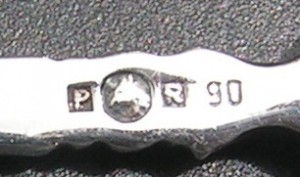
Gero-zilver is the Dutch name for silver plated pieces made of alpaca alloy. It is hallmarked 90 meaning that 90 g of silver has been used to cover 12 spoon+fork sets.
Tibetan silver
Exotic and cheap, but it is actually no silver. This metal is similar to pewter – an alloy of copper, and sometimes tin or nickel, with a small (1-2%) percentage of pure silver. Currently, jewelry, beads and castings described as ‘Tibetan Silver’ tend to be a base iron ‘cheese metal’ casting, overlaid with pewter and silver plating. EBay put on a Buyer’s Advisory warning about the possible dangers of Tibetan Silver sold through their site. I don’t process this alloy for the same reason: you never know what unhealthy substances will be released when heating. Of course it can be worn – for instance as a charm, but better not in direct contact with skin.
‘Silver-plated’ and ‘silver-filled’
Jewellery makers always tried to minimize costs. For instance by replacing massive silver by silver plated metal which looks about the same but has different composition. Traditionally silver-plated metal has been made by electroplating fine silver on base metal alloy – usually nickel silver or Britannia metal, sometimes brass or copper. This was perfected for industrial purposes in the mid 1800’s. Electroplating is the process of using electrical current to coat an electrically conductive object with a relatively thin layer of metal. Because the silver layer is thin it flakes off easily. This is why ‘silver filled‘ technology is becoming more and more popular. In silver filled pieces the silver layer is many times thicker than a standard plating. It is brought by a different technique, called bonding. As a result silver filled jewellery retains its silver look for a longer time.
There is also rhodium plated silver jewellery on the market. Rhodium plating can dramatically increase the long term durability, brightness and luster of the sterling silver jewellery, preventing oxidation and tarnish. On the other hand mind that rhodium is expensive product, it costs around $400 USD per gram. So the applied layer is often very thin and can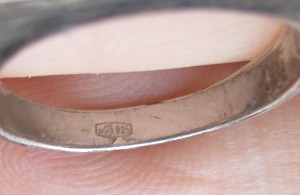 wear off with the time.
wear off with the time.
Another problem is that very often so called rhodium-plated jewellery (especially the cheap one made in China) is actually copper or nickel under rhodium plating to make it look like silver. I bought such a ring myself – in a real-life shop and with a 925 hallmark! Look how the plating has flaked off just underneath the hallmark. The ring turned out to be copper.
Many jewellery pieces sold on the market are labelled “silver” while they are in fact silver plated, silver filled or – even less – just silver look or silvertone. If you are looking for genuine silver jewellery it is probably better to search on the term “sterling” and check the material description before checkout. And also check the price:if the price seems too good to be true, then it’s likely that you’re not purchasing real silver.
Methods of testing silver
There are many – industrial and home – methods to test silver purity standards. If you want to do it at home, the most reliable way will be a test kit like this one .
If you are interested in experiments with home testing silver please read my blog.
Information on hallmarks used in different countries.
